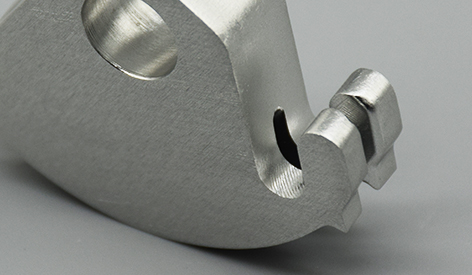ㆍPrivacy: We respect your privacy. Here you can find an example of a non-disclosure agreement. By submitting this form, you agree to our terms & conditions and privacy policy.
We use cookies to enhance your browsing experience, provide personalized content and analyze our traffic. By clicking "Accept", you agree to our use of all cookies.
Views: 3 Author: Site Editor Publish Time: 2024-04-25 Origin: Site









Introduction:
Parts forming is a critical process in manufacturing that involves shaping raw materials into finished components using various techniques and technologies. This article explores the fundamentals of parts forming, including different methods, equipment used, key considerations, and strategies for efficient production to meet diverse industry demands.
1. Understanding Parts Forming:
Parts forming encompasses a range of manufacturing processes aimed at transforming raw materials into functional parts. Common methods include casting, forging, stamping, bending, and extrusion, each offering unique advantages and suitability for different part geometries and materials.
2. Types of Parts Forming Techniques:
a. Casting: Casting involves pouring molten metal or plastic into a mold to produce complex shapes with excellent dimensional accuracy. It is suitable for high-volume production of parts with intricate designs.
b. Forging: Forging uses compressive forces to reshape metal billets or ingots into desired shapes. It enhances material strength and produces parts with superior mechanical properties.
c. Stamping: Stamping utilizes dies and presses to cut or form sheet metal into specific shapes. It is ideal for high-speed production of flat or contoured parts with tight tolerances.
d. Bending: Bending involves deforming metal sheets or tubes using mechanical or hydraulic presses to create curved or angular components. It is commonly used in the fabrication of brackets, frames, and enclosures.
e. Extrusion: Extrusion pushes molten plastic or metal through a die to produce continuous profiles or hollow shapes. It is suitable for manufacturing tubes, rods, and structural components.
3. Equipment Used in Parts Forming:
a. Casting Equipment: Includes furnaces, molds, and casting machines such as die casting machines, investment casting equipment, and sand casting tools.
b. Forging Equipment: Includes forging presses, hammers, and dies designed for hot or cold forging processes.
c. Stamping Equipment: Includes stamping presses, dies, and feeders capable of high-speed production and precision forming.
d. Bending Equipment: Includes press brakes, roll formers, and tube bending machines for shaping sheet metal and tubes.
e. Extrusion Equipment: Includes extruders, dies, and cooling systems for continuous production of extruded profiles and shapes.
4. Key Considerations for Efficient Parts Forming:
a. Material Selection: Choose materials based on part requirements, including strength, durability, corrosion resistance, and cost-effectiveness.
b. Tooling Design: Optimize tooling design for each forming process to achieve desired part geometries, tolerances, and surface finishes.
c. Process Optimization: Implement lean manufacturing principles, automation, and advanced process control techniques to minimize waste, reduce cycle times, and improve overall efficiency.
d. Quality Control: Establish robust quality control measures, including in-process inspections, dimensional checks, and material testing, to ensure parts meet specifications and standards.
e. Environmental Impact: Consider sustainability factors such as material recyclability, energy efficiency, and waste reduction in parts forming processes.
5. Strategies for Efficient Production:
a. Batch Processing: Batch similar parts together to maximize equipment utilization, minimize setup times, and streamline production workflows.
b. Just-In-Time Manufacturing: Adopt JIT principles to reduce inventory levels, improve lead times, and respond quickly to changing customer demands.
c. Supplier Collaboration: Partner with reliable suppliers for raw materials, tooling, and equipment to ensure timely delivery and quality consistency.
d. Continuous Improvement: Foster a culture of continuous improvement by analyzing production data, identifying bottlenecks, and implementing corrective actions to optimize processes and enhance productivity.
Conclusion:
Parts forming is a fundamental aspect of manufacturing, offering diverse techniques and strategies for producing high-quality components. By understanding different forming methods, leveraging advanced equipment, considering key factors, and implementing efficient production strategies, manufacturers can achieve cost-effective and reliable part production to meet market demands and stay competitive in today's dynamic industry landscape.

